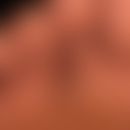DefinitionThis section has been translated automatically.
Expiratory stridor is a low-frequency sound occurring during expiration that results from intrathoracic obstruction (Michalk 2018).
ClassificationThis section has been translated automatically.
Expiratory stridor is differentiated between acute and chronic stridor (Michalk 2018) and between endobronchial and exobronchial obstruction (see also Pathophysiology).
(Herold 2022)
You might also be interested in
Occurrence/EpidemiologyThis section has been translated automatically.
Expiratory stridor is most commonly caused by chronic obstructive pulmonary disease, accounting for approximately 90% of cases (Herold 2022).
In children, expiratory stridor occurs 4 times less frequently than inspiratory stridor (Nicolai 2011).
EtiopathogenesisThis section has been translated automatically.
Expiratory stridor results from obstruction of the lower airway, i.e., from the larynx to the bronchioli terminales (Herold 2022).
Expiratory stridor is found, for example.
- acute at:
- endobronchial foreign body
- obstructive airway disease such as bronchial asthma, obstructive bronchitis, emphysema (Schaps 2008)
- chronic in:
- Bronchial leaflet
- Vascular anomaly
- Endobronchial tumor
- Bronchomalacia
- Compression by lymph nodes (Michalk 2018).
- Lung carcinoma (Rosenecker 2014)
- Psychological causes (very rare; stagnate at night [Cantarella 2021]).
Biphasic stridor
Biphasic stridor is found in e.g.
- acute in:
- bacterial tracheitis
- Pseudocroup ( inspiratory stridor at first, expiratory stridor possible in addition if severe [Johnson 2014)])
- deep aspiration of a foreign body into the bronchial system (Rosenecker 2014)
- chronic in:
- Tracheal seal
- tracheal compression due to vascular anomaly
- Tracheomalacia
- cartilage malposition (Michalk 2018)
PathophysiologyThis section has been translated automatically.
- Endobronchial obstruction:
This involves muscle spasm and mucosal edema, such as occurs in bronchial asthma, or mucostasis or hyper- and dyscrinia, such as occurs in COPD (Herold 2022).
- Exobronchial obstruction:
This causes bronchiolar collapse due to wall instability during expiration. This is the case, for example, in emphysema (Herold 2022).
In expiratory stridor, the thorax serves as a pressure chamber. Intrathoracic pressure is negative during inspiration and positive during forced expiration. Intrathoracic pressure is transmitted to constrictors. As a result, intrathoracic constrictions dilate during inspiration (little or no stridor) and compress during forced expiration, increasing stridor (Rosenecker 2014).
LocalizationThis section has been translated automatically.
- Intrathoracic stridor:
This originates in the lower trachea or bronchi and manifests as expiratory stridor.
- Biphasic stridor:
Constrictions in the middle trachea express themselves both inspiratory and expiratory and are referred to as biphasic stridor (Michalk 2018).
ClinicThis section has been translated automatically.
The leading symptom in expiratory stridor is expiratory obstruction with prolonged expiration (Herold 2022).
In this case, in addition to stridor, cough with muco- viscous mucus and dyspnea are typically found (Rosenecker 2014).
In addition to stridor, cough, hemoptysis, chest pain, dyspnea, B- symptoms, hoarseness are found (Rosenecker 2014).
- Pseudocroup:
In pseudocroup, there is inspiratory stridor in mild and moderate stages. In severe stages, expiratory stridor is also found (Johnson 2014).
- Bronchomalacia:
In addition to expiratory stridor, there is cough, dyspnea, spastic breathing, and recurrent infections in the deep airways (Nicolai 2011).
DiagnosticsThis section has been translated automatically.
Auscultation
In obstructive bronchitis, bronchial asthma, bronchiolitis, etc., expiratory stridor can be auscultated on both sides.
Side-differentiated expiratory stridor can occur with deep foreign body aspiration and unilateral obstruction by, for example, a mucus plug, or can be caused by pneumothorax (Rosenecker 2014).
ImagingThis section has been translated automatically.
- X-ray of the soft tissues of the neck
For laryngeal diagnostics, an a. p. soft tissue x-ray is required, and for epiglottis diagnostics, a lateral soft tissue x-ray. However, the X-ray examination with high KV- load is rather of secondary importance. (Michalk 2018).
- Laryngeal ultrasound
Laryngeal ultrasound (LUS) represents a non-invasive examination method and is primarily used in children for the diagnosis of stridor. With regard to general laryngeal disease, sensitivity is 87% and specificity is 100% (Friedman 2019).
- Airway Endoscopy:
Bronchoscopy is the main investigative modality.
Rigid bronchoscopy should be used to confirm breathing if there is higher grade stenosis or manipulation of central airway stenoses (Brunkhorst 2021).
- Esophagogram:
This can be used to localize narrowing in the esophageal area (Michalk 2018).
- Magnetic resonance imaging:
An MRI of the neck is primarily used to visualize the retropharynx, mediastinum, and great vessels (Michalk 2018).
Other methods of examination This section has been translated automatically.
- Spirometry
Spirometry and the flow-volume curve can be used to differentiate fixed and dynamic extra- or intrathoracic airway stenoses (Brunkhorst 2021).
- Bodyplethysmography
Bodyplethysmography provides evidence of central stenosis or obstruction of the bronchi. In addition, a bronchial provocation test with methacholine can be performed in cases of suspected bronchial asthma (Brunkhorst 2021).
General therapyThis section has been translated automatically.
Therapy depends on the cause of the stridor.
Note(s)This section has been translated automatically.
General information
If the obstruction is below the glottis, stridor occurs during expiration. If there is severe upper airway obstruction, the initial inspiratory stridor becomes biphasic (Pfleger 2016).
LiteratureThis section has been translated automatically.
- Brunkhorst R, Schölmerich J (2021) Internal medicine - differential diagnosis and differential therapy:Klug entscheiden - gut behandeln. Elsevier Urban and Fischer Publishers Germany 226 - 227.
- Cantarella G, Ciabatta A C (2021) A Rare Cause of Extremely Loud Expiratory Stridor in an 11-Year-Old Patient. Laryngoscope 131 (3) E 929 - E 931.
- Friedman S, Wasserzug O, Derowe A, Fishman G (2019) The role of laryngeal ultrasound in the assessment of pediatric dysphonia and stridor. Journal of Pediatric Otorhinolaryngology. (122) 175 - 179
- Herold G et al (2022) Internal Medicine. Herold Publ. 329, 361
- Johnson D W (2014) Croup. BMJ Clin Evid. PMC4178284
- Kasper D L et al (2015) Harrison's Principles of Internal Medicine. Mc Graw Hill Education
- Michalk D, Schönau E (2018) Differential diagnosis of pediatrics. Elsevier Urban and Fischer Publishers Germany 312 - 314.
- Nicolai T, Griese M (2011) Practical pneumology in pediatrics - diagnostics: rational differential diagnosis. Georg Thieme Verlag Stuttgart 59 - 60
- Pfleger A, Eber E (2016) Assessment and causes of stridor. Paediatr Respi Rev (18) 64 - 72.
- Rosenecker J (2014) Pediatric differential diagnosis. Springer Medizin Verlag Berlin / Heidelberg 63 - 63
- Schaps K P, Kessler O, Fetzner U (2008) GK2 The second - compact. Springer Medizin Verlag Heidelberg 167 - 168
- Schramm D et al (2020) Airway endoscopy in childhood. AWMF online AWMF- Register- No. 026 / 025.
Disclaimer
Please ask your physician for a reliable diagnosis. This website is only meant as a reference.




